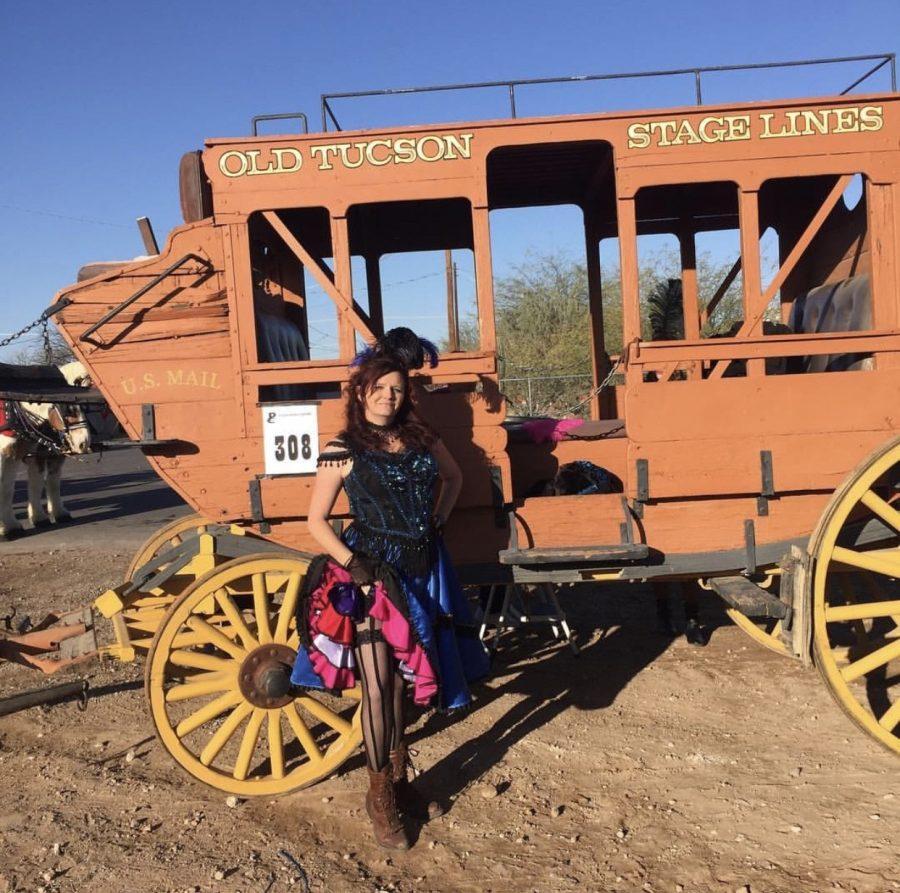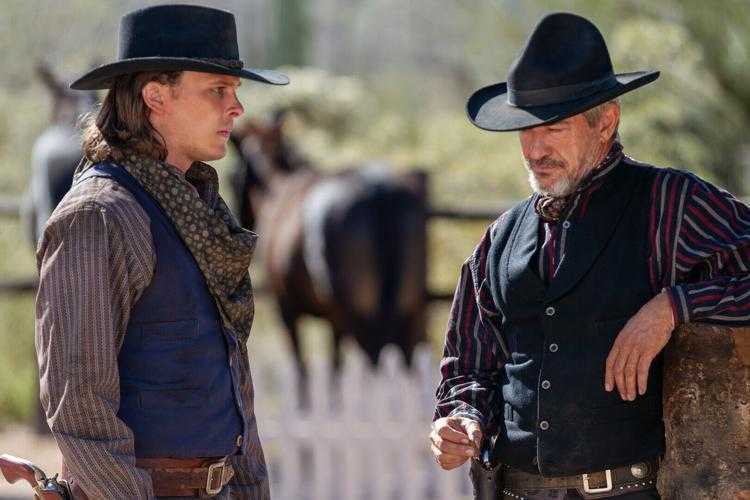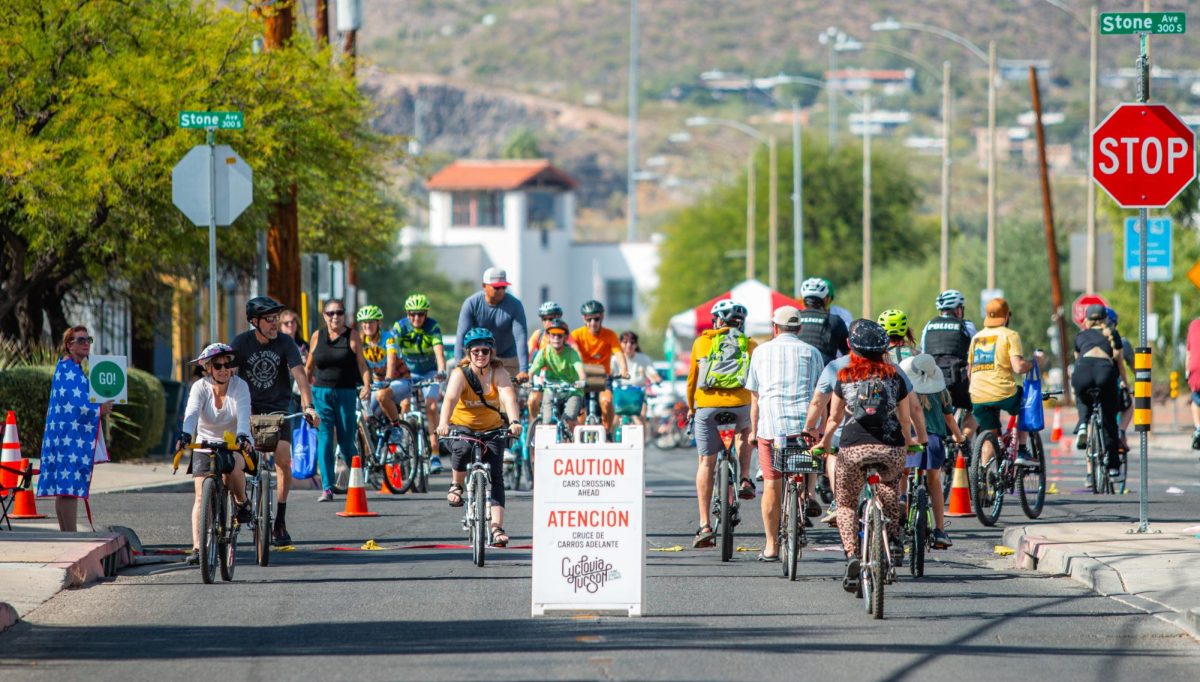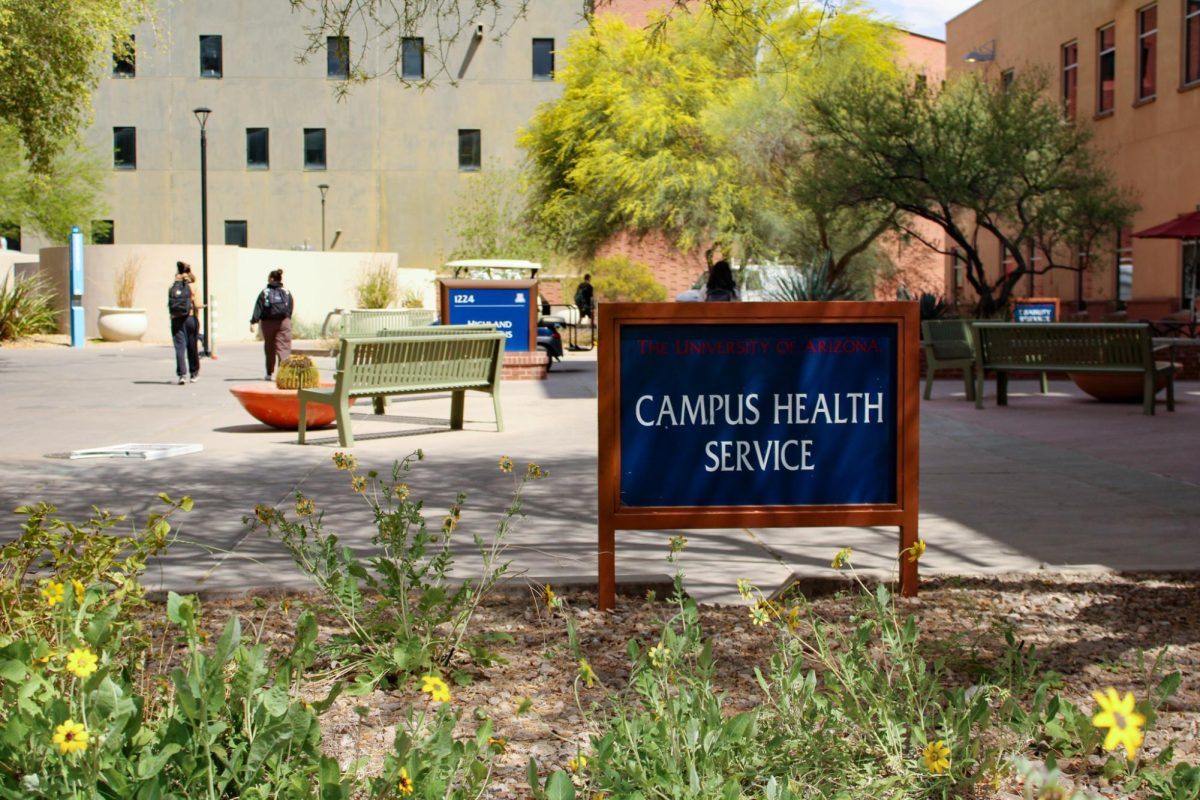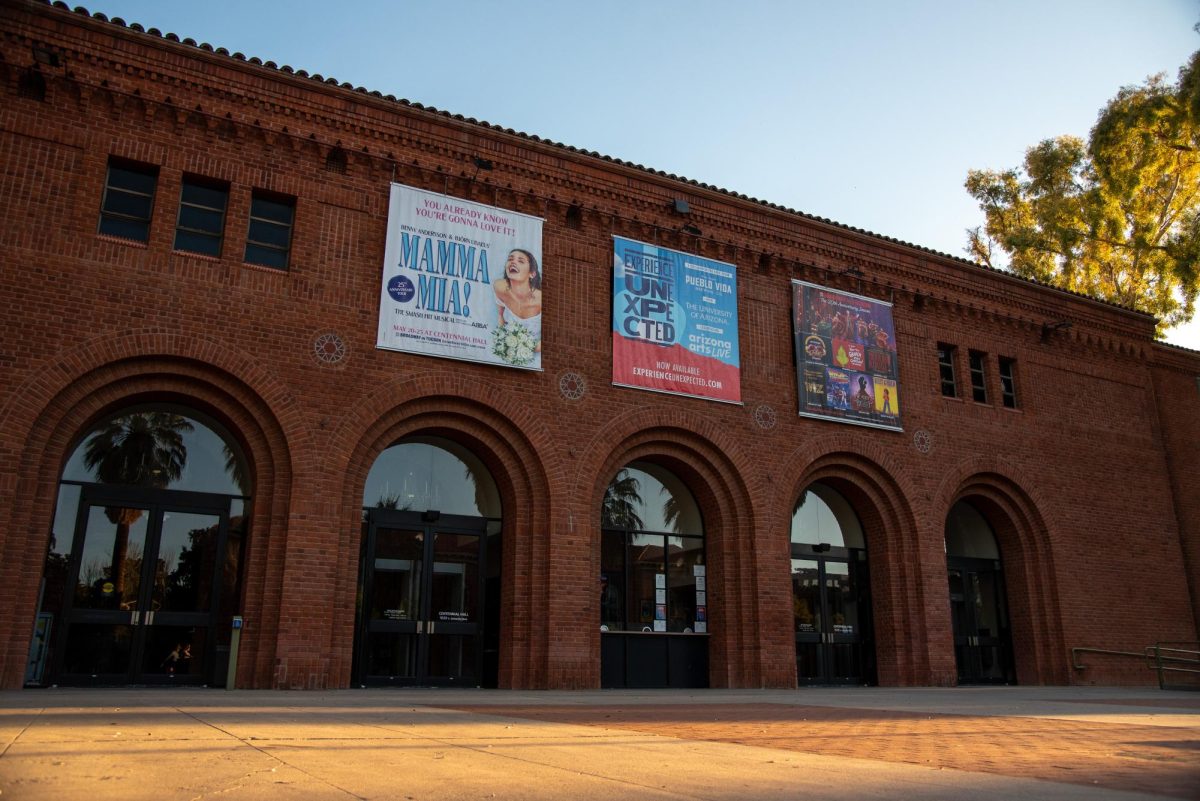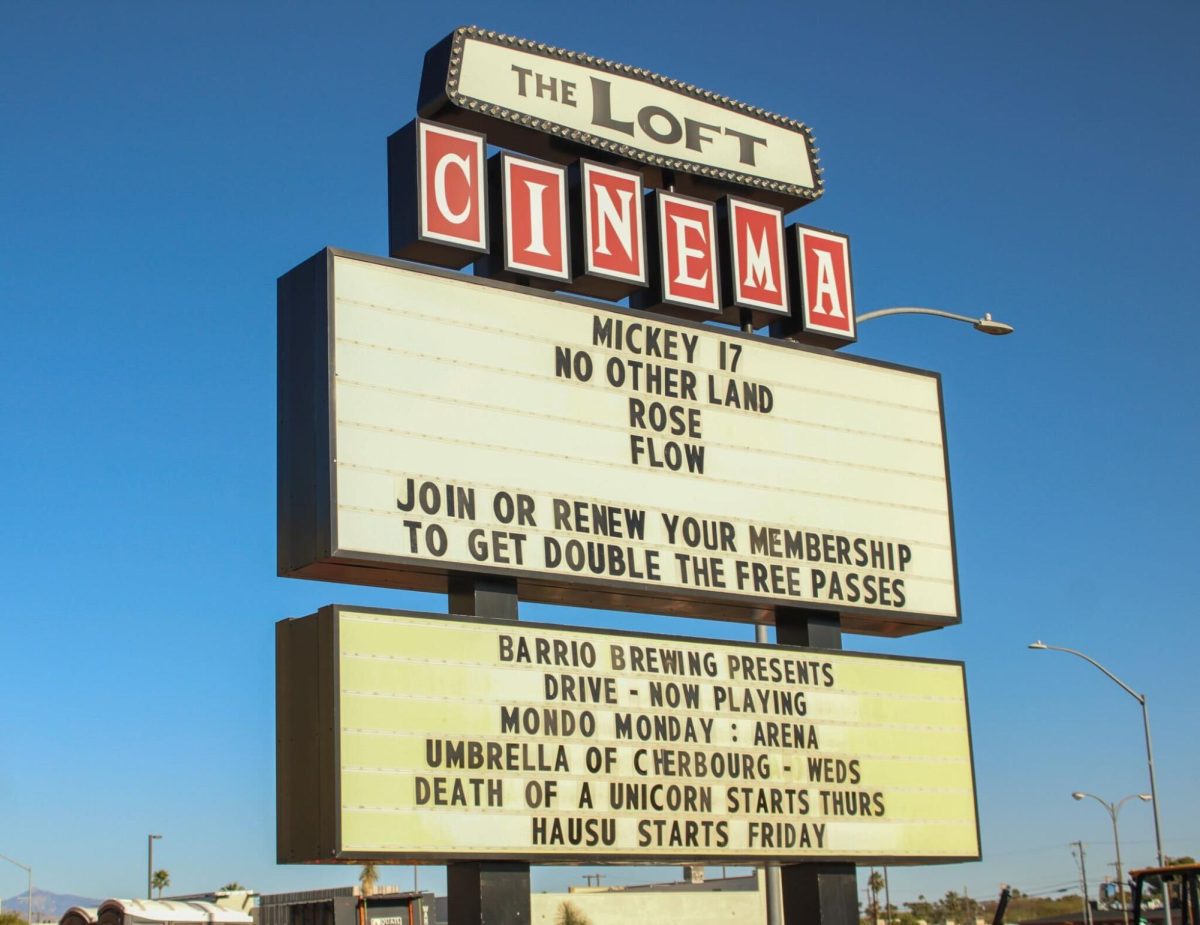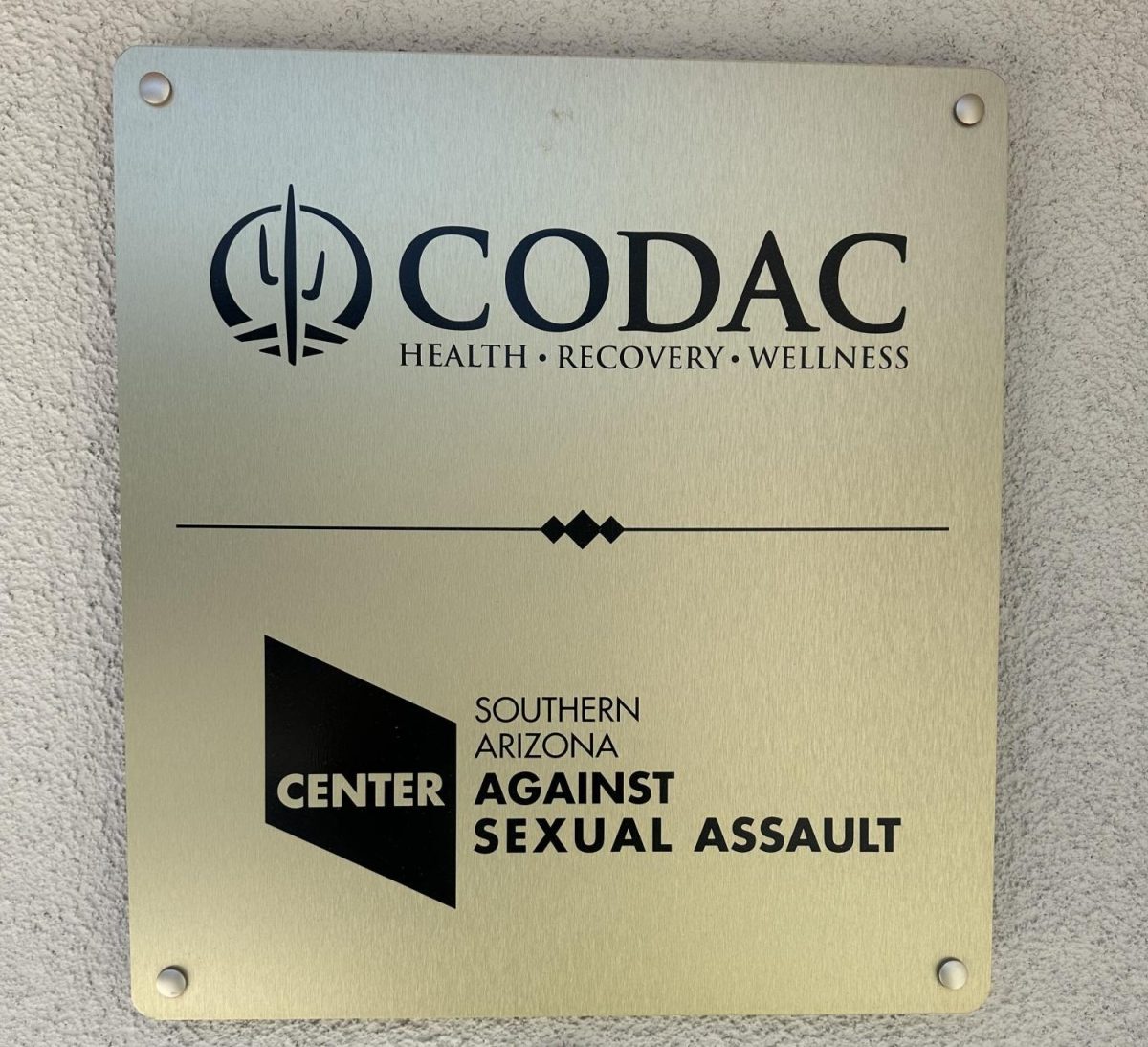White text dominates the homepage of Old Tucson Studio’s website, notifying visitors that it, too, has been a victim of the pandemic. The “Hollywood in the Desert” saw the production of more than 400 film and television projects over 75 years. But with COVID-19 still as a disruptive force, the future of its shuttered doors remains uncertain.
Geraldine M. Daugherty worked at Old Tucson during the ’70s, ending her last stint in 2005. She described her position as a jack of all trades, doing everything from cooking to wrangling horses and driving the stage coach. In fact, most of the food seen in the movies — such as “Father Murphy”, “Little House on the Prairie” and “High Chaparral” — was her handiwork.
The studio often brought Daugherty into contact with famous actors. Robert Duvall and Tommy Lee Jones were both fondly remembered as sweet and soft-spoken gentlemen, and Johnny Cash was one of a select group of actors she allowed to stop at the back door of her restaurant for her signature prime rib sandwich. Discussing Sam Elliott elicited blushing and laughter. “He made my tummy tickle. That deep voice of his put goosebumps on my arms,” Daugherty said.
Daugherty even gave filmmaking a try. A scene in the “The Gambler” from 1979 wouldn’t have been the same if not for her fortuitous intervention. She accidentally gave Kenny Rogers a horse trained to fall over and the unscripted tumble delighted the director so much it was kept in.
A career full of memories made Old Tucson’s closure all the more poignant for Daugherty. She immediately went into her room and cried upon news of it, she said. Through tears of her disappointment, however, she remained defiant.
“I told every employee: they can shut those doors all they want but we were Old Tucson, we made Old Tucson,” Daugherty said. “The spirit’s going to live on through us, through each and every one of us.”
Charity Stevens, guest services and merchandise employee, was there during Old Tucson’s last days. When COVID-19 showed up in the news cycle, employees began to get increasingly worried it would result in a shutdown. On March 19, their fears became reality.
Still, Stevens said, there was a general feeling that it would all “blow over”. This seemed confirmed when the theme park was reopened during Memorial Day weekend, albeit under strict limitations. Capacity was capped at 300 and the few open stores allowed only six in at a time. Glass shields and masks were new mainstays.
Even before the mask mandate, management had instituted more frequent cleanings, sanitation stations, socially distanced queues and moved eating and Can-Can Girl Shows outdoors.
RELATED: ART IS ACTIVISM: Student-artist on online perception, authenticity and healing, plus a Q&A
Stevens felt confident Pima County was content with these measures, noting that county officials were often present taking notes and pictures. So, it was a complete surprise when while getting ready for the job she took in lieu of her post at Old Tucson, she received a news alert on her phone that Old Tucson was indefinitely closed.
“Pima County jumped the gun,” Stevens said. The abrupt announcement left her managers in a difficult position, and the employees scared and confused. Stevens said that she is especially worried about coworkers that have young children or those retired whose only source of income was Old Tucson, because finding another job mid-pandemic isn’t going to be easy.
Stevens was unable to hold back her emotion when discussing Old Tucson’s closure. For her, it was like “a family got displaced”. She remains hopeful, however, that it will eventually reopen.
“I watched Old Tucson burn down, and thought then it wasn’t going to open up,” Stevens said. “In 2003, it closed back down and they opened back up. So [I] thought, ok it’s just going to close down and open back up. I know indefinitely is not forever.”
RELATED: Best friends in business: Two UA alumni launch their own businesses
At one point, Old Tucson was the second most visited attraction in Arizona after the Grand Canyon, according to Buck Helton, the studio’s former resident singing cowboy and western music historian. Helton performed songs from films produced at the studios and spent time in character outside to help with “streetmosphere”. He regularly played “Home on the Range” at the Grand Palace, pointing out mounted animal heads and making the joke “don’t worry, we don’t do that to guests,” Helton said.
Helton loved working at Old Tucson for the three and a half years before his position was eliminated for budgetary reasons.
“Nobody worked out there because we thought we were going to get rich,” Helton said. “We were there because we loved it. I honestly almost felt like a thief cashing a paycheck.”
If Old Tucson reopens, Helton said he’d return in a “heartbeat.”
Despite feeling saddened by its closure, Helton said that he is reassured that Old Tucson is safe from any demolition attempts.
Old Tucson is a state landmark and lies within the boundaries of the Saguaro National Park. The original studio was built in 1939 and many of its buildings were constructed by descendants of the Tohono O’odham in the traditional adobe style. In fact, for a time, it served as a functioning Tohono O’odham village until conditions on the reservation improved enough that it was no longer the preferable option.
Still, to many, it’s upsetting “seeing it closed driving by, [with] cement barricades keeping you from going into the parking lot,” Helton said. “It looks rather like a graveyard.”
Helton expects the studio to remain closed until the pandemic runs its course, and things can return to some semblance of normalcy. But after that time, he would be “absolutely astonished” if it wasn’t reopened.
“Rest assured, it’s kind of like the old serials from the 1930s, several of which were shot out there,” Helton said. “Where it looks like the hero has gone off the cliff in the stagecoach but you find out in the next chapter that he jumped off just in time.”
Follow Gloria Gomez on Twitter



